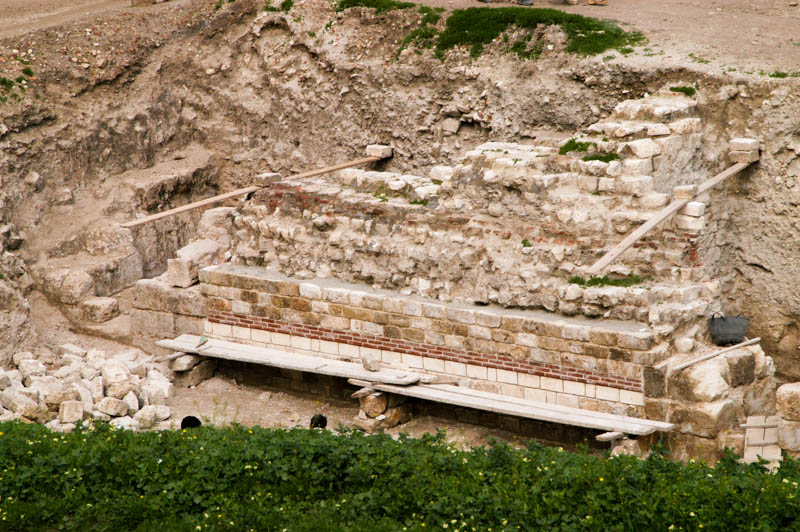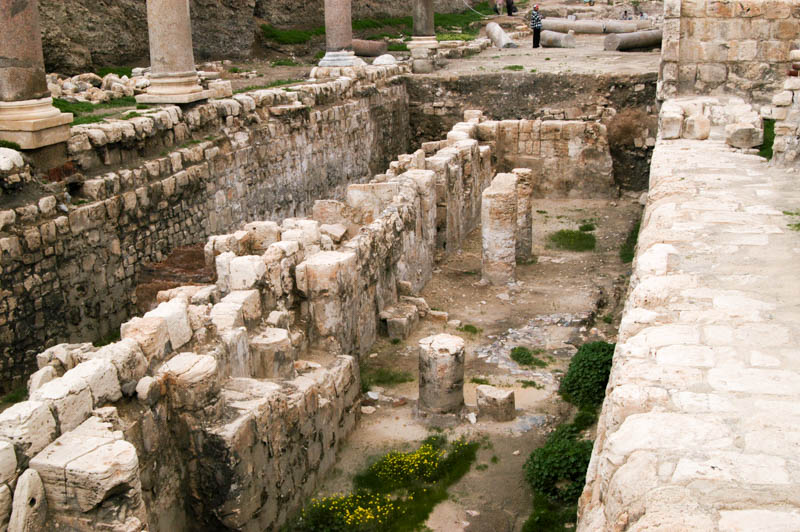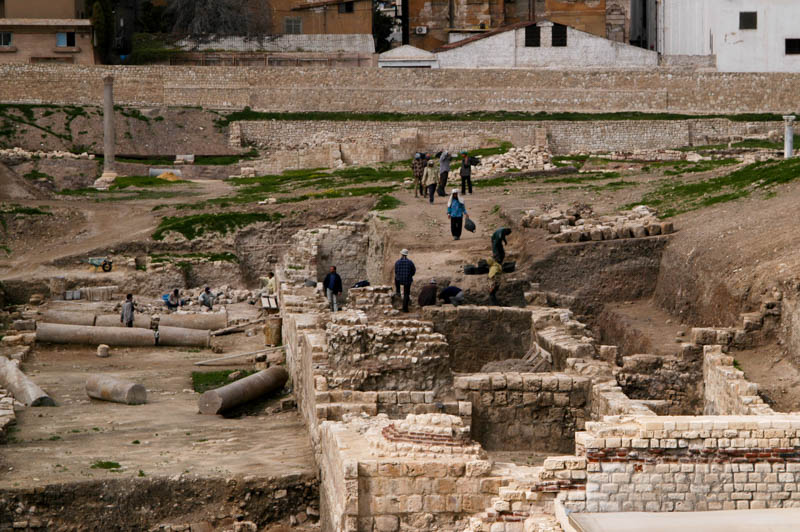
In the same hillside where the Roman Amphitheater has been excavated. an ongoing dig is revealing a Roman street — residential areas, shops. pavements, and baths (including the lovely Villa of the Birds) from the third century BCE.
The site is closed to visitors, although there was a large crew working when we visited. The level of the Roman street is far below the current street level — it makes me wonder what else lies beneath the current city.


Many of the buildings are built of alternating layers of stone and brick, a technique called opus mixtum — the layered walls are also in the old city of Cairo, and around the city of Alexandria itself almost 500 years later.